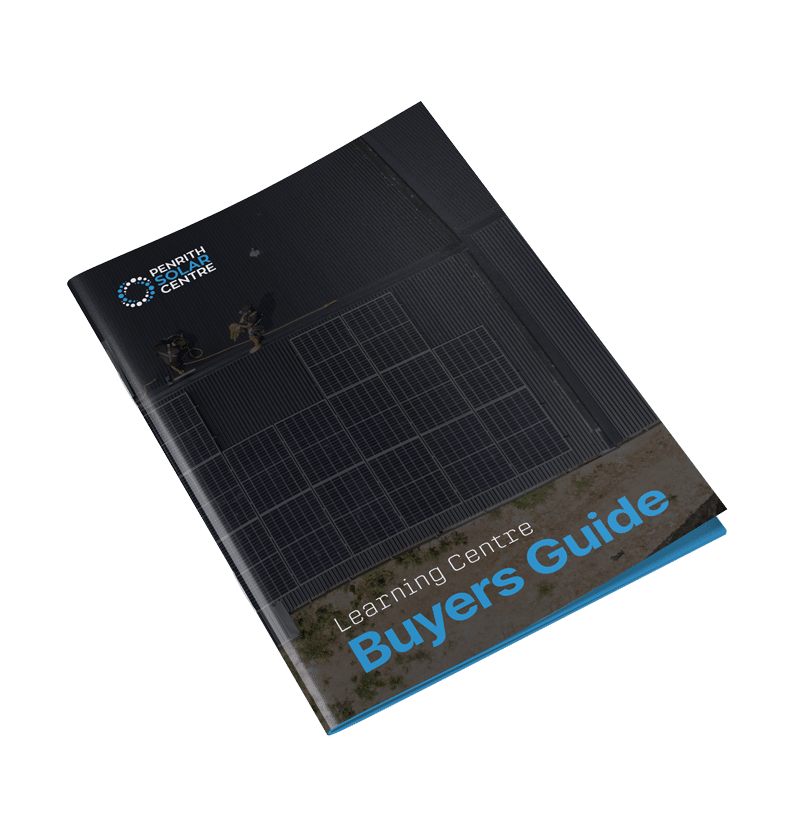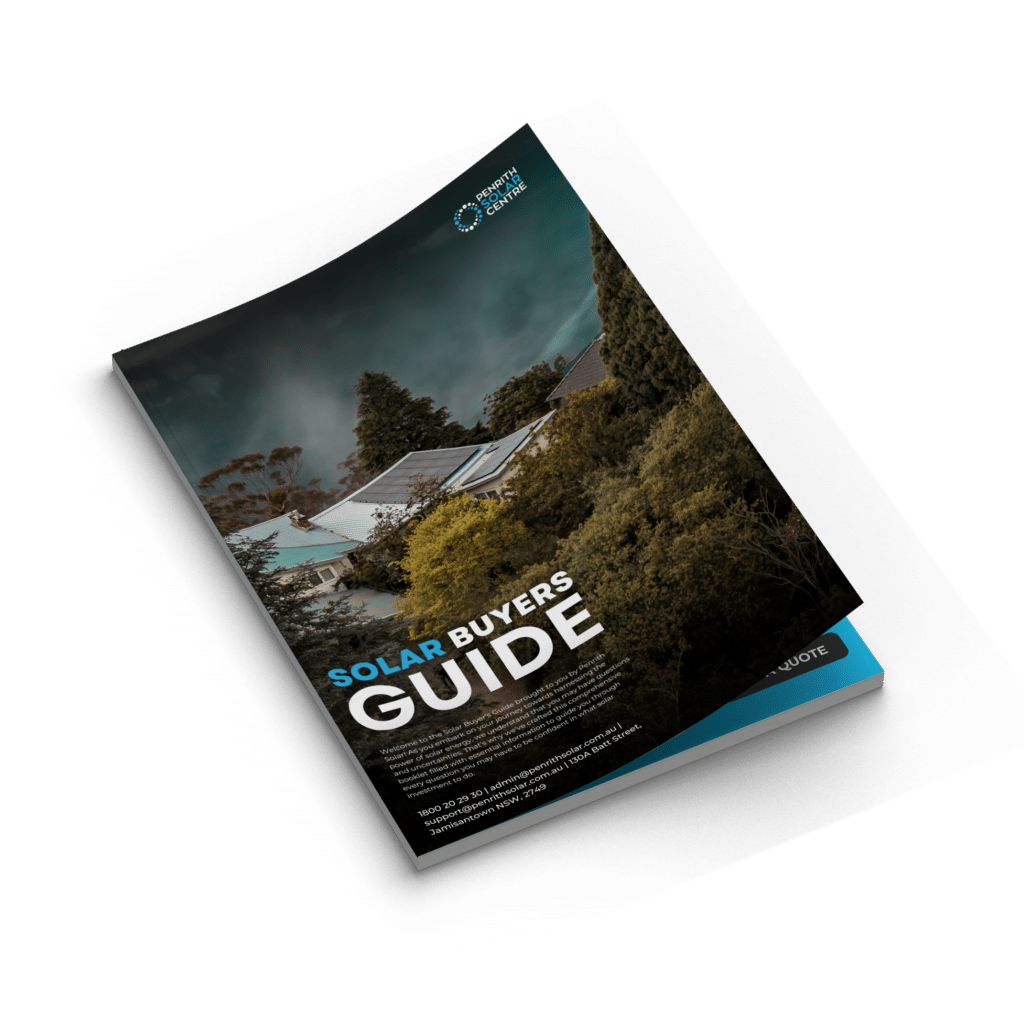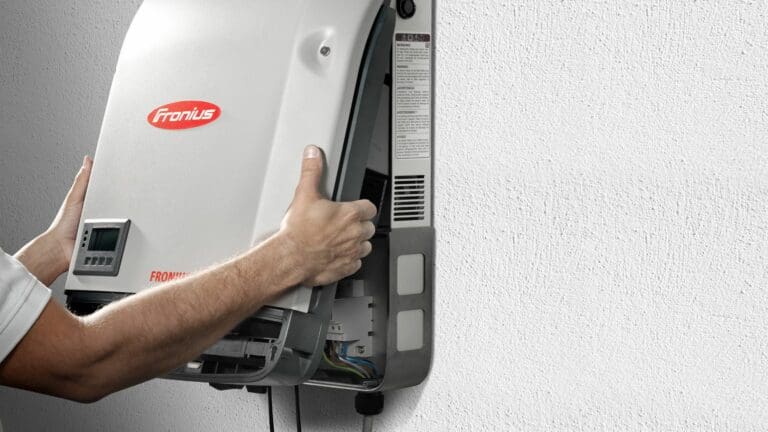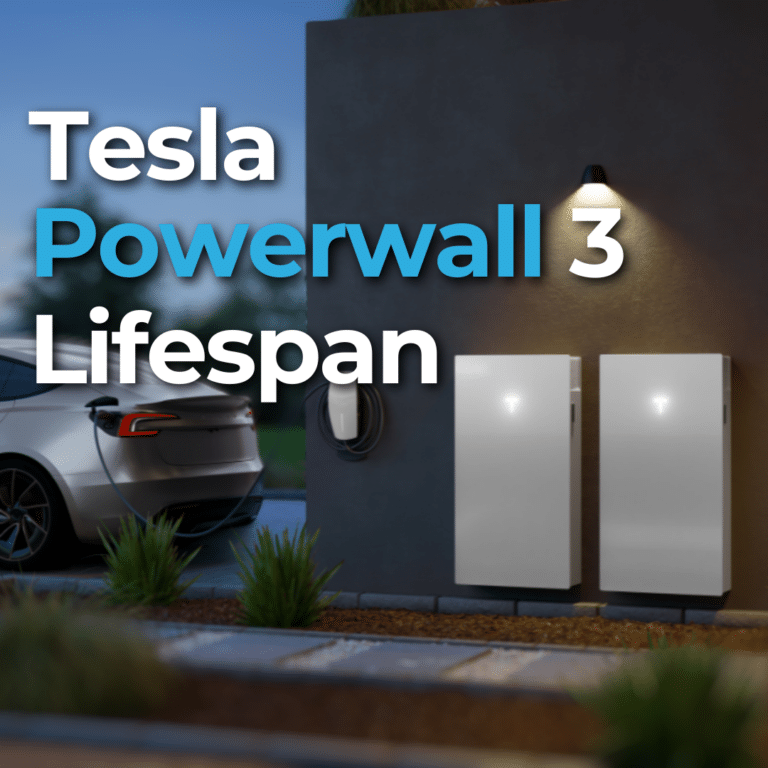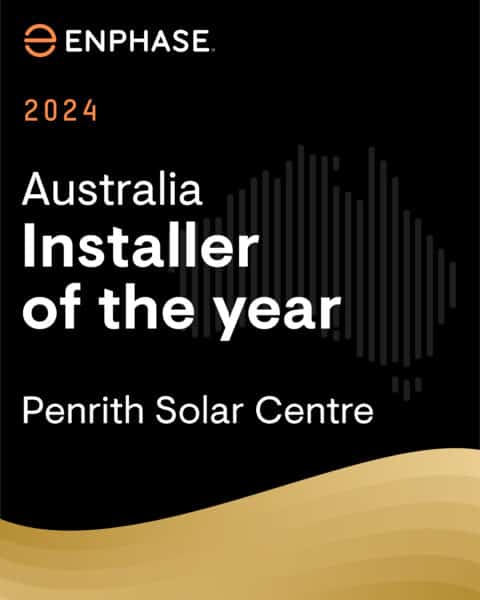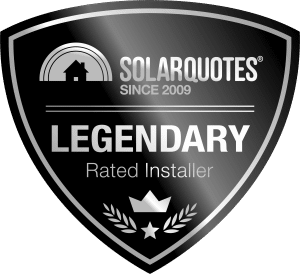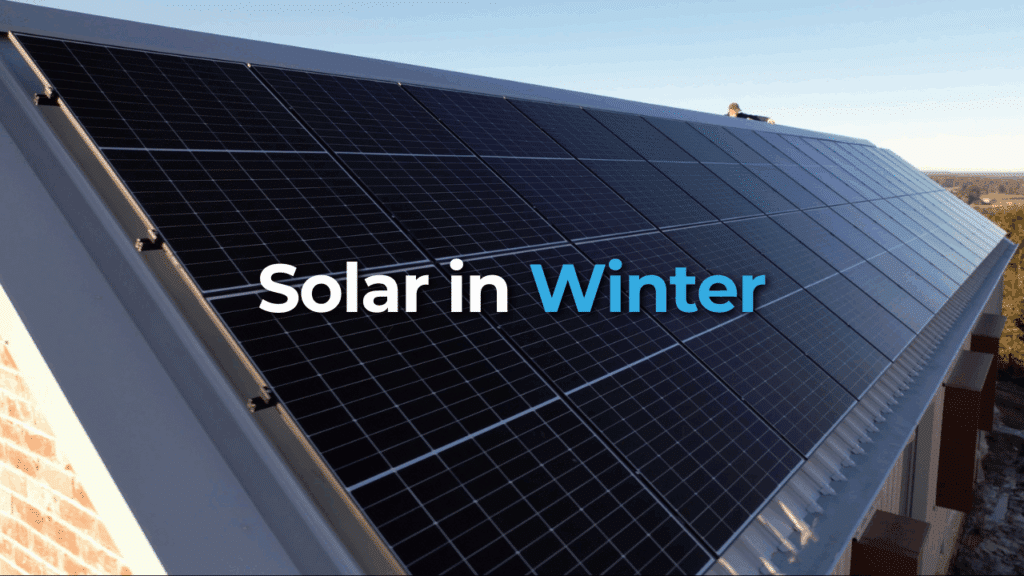
It’s the middle of winter. The days are short. The sun sits low in the sky. Your heating is running longer, and your power bills are creeping up.
You invested in solar to reduce your bills and increase your energy independence. But now, in the coldest months, it feels like your system is letting you down. You’re wondering if something’s wrong or if your solar setup just wasn’t built for winter.
You’re not alone. At PSC Energy, we’ve helped hundreds of Australian households deal with this exact problem. Most of the time, the issue isn’t the weather. It’s that the system was designed based on yearly averages, not the hardest days of the year.
In this article, you’ll learn the following:
- Do Solar Panels Work in Winter?
- Why Oversizing Your Solar Panel System Makes Sense
- Don’t Shrink Your Solar Panel System, Smarten It
- Solar Panel Myths Busted
- Common Solar Panel Pushbacks, Debunked
- Your DIY Solar Panel Audit Checklist
- FAQ: Winter Solar Performance and System Upgrades
By the end of this article, you’ll learn how to do a simple winter solar audit, why you might need more panels or smarter tech, and how to size your battery for real use, not just export savings.
If you want a solar system that works when you need it most, start here.
Do Solar Panels Work in Winter?
Winter is the toughest time for your solar system.
- It’s when the sun is weakest.
- The days are the shortest.
- Your electricity use is highest.
Heating, hot water, and early evening appliance use all push your demand up just as your solar production drops.
This makes winter the perfect time to test your system. If your solar panels can’t keep up now, they certainly won’t do any better when conditions get even colder or cloudier. That’s why a winter audit is more than just useful. It’s necessary.
Many solar systems were designed based on average performance across the year. That means the installer analysed the total sunlight over 12 months and designed a system that made sense on paper. But real life doesn’t happen in averages. You don’t use power evenly every day, and you don’t need your system to work well only when it’s sunny.
What you really need is a solar setup that helps you on the worst days. When clouds cover the sky and your power bill is climbing, that’s when your system should still hold its own. If it can handle winter, it can handle anything.
That’s why now is the perfect time to pause and ask: Is your solar system working when you need it most?
If you’re interested in learning more about solar systems, you might want to check out our introductory article titled, New to Solar: Start Here.
Power up your savings. Click here.
The Danger of “Average” Solar Panel Designs
Most solar systems are sized based on averages. Installers often consider your location, check the typical yearly sunlight, and select a system that balances cost with expected energy generation. That sounds smart, but it hides a major flaw.
Averages don’t prepare you for bad days. They don’t show how your system will perform on a cloudy Tuesday in July when your heating is on, and your solar is barely ticking over. Averages smooth out the highs and lows.
That’s why bigger systems usually make more sense. When you add more panels, you create a safety buffer for days with poor sunlight. More panels capture more light, and if the sun is low in the sky, every extra panel helps generate electricity. You’ll cover more of your winter load and reduce the amount of power you buy from the grid.
More panels also make it easier to shift your electricity use to the daytime, where solar can handle it directly. That means less reliance on nighttime top-ups and fewer surprises on your bill. We’ll cover this in the next section.
If your system was designed with averages in mind, it might be time to rethink. Design for the hardest days and the rest of the year becomes much easier.
If you’re interested in learning a bit more about solar panels and energy systems, you might want to check out the following article titled, Are Solar Panels Worth It in NSW, Australia? A Price Breakdown for 2025.
Let’s talk solar savings. Click here.
Why Oversizing Your Solar Panel System Makes Sense
Oversizing a solar system means installing more panel capacity than your inverter is rated to handle. It might sound like a mistake, but in Australia, it’s actually a wise and common design choice, and it’s allowed under Clean Energy Council guidelines.
Here’s why it works.
Solar panels don’t continuously operate at their peak output. Clouds, winter sun angles, dust, and high temperatures can all reduce their performance.
By oversizing, you increase your chances of reaching your inverter’s peak more frequently, even in less-than-ideal conditions.
For example, pairing 8kW of panels with a 6kW inverter won’t cause any damage. Instead, it will provide stronger generation in the morning and late afternoon, as well as better performance on cloudy days. It also increases your total daily production, helping you cover a greater portion of your home’s energy needs with solar, even in winter.
Oversizing also helps you shift more of your loads into daylight hours. If your system generates more energy throughout the day, you can run appliances like washers, dishwashers, and hot water systems without relying on the grid.
In most cases, oversizing is one of the easiest and most cost-effective ways to get better year-round value from your solar investment. Panels are cheaper than they’ve ever been, and the returns from a slightly larger array often outweigh the cost quickly.
If your system isn’t oversized, or you’re planning a new one, it’s worth asking: could more panels give me the winter resilience and daytime coverage I really need?
If you’re interested in learning a bit more about weighing the cost of solar against the cost of the grid, you might want to check out the following article titled, Cost of Solar Panels vs. Cost of Energy from the Grid.
Ready to go solar? Click here.
Don’t Shrink Your Solar Panel System, Smarten It
Right now, many solar owners are thinking about downsizing. Feed-in tariffs are shrinking rapidly, with some dropping to just a few cents per kilowatt-hour. On top of that, export charges have started appearing in some parts of Australia. It’s natural to wonder if having a large solar system is still a good idea.
But cutting back your panels is the wrong move. The better answer is to upgrade how your system works. You need smarter solar, not smaller solar.
Start with your inverter. A good inverter should let you cap or cut exports when it’s not worth sending power to the grid. That means you can still benefit from a large solar array without paying export charges. A smart inverter gives you control, helping you adapt as rules and tariffs change.
More importantly, your installer needs to be someone who actually sets up these controls properly. Not every company will. Some just install and move on. Others use flashy ads and sports celebrities, but they won’t walk you through your options when tariffs shift or export limits change.
You need a system that you can adjust, not one that locks you in.
Large arrays, paired with advanced technology, help you take control of your power. They give you more energy during the day and more freedom to use it how you want. In a time when exports are worth less, having more panels still pays off if you use them wisely.
If you’re interested in learning a bit more about how to save with solar, you might want to check out the following article titled, Self-Consumption: How to Increase Solar Energy Use.
Get started with solar. Click here.
Solar Panel Myths Busted
Many people think batteries are just for storing excess solar energy during the day. The truth is that your battery should be sized to minimise the amount you draw from the grid at night. That’s when power is expensive. And in winter, your nighttime use increases due to heating, hot water, and lighting.
To size a battery properly, start by tracking the amount of energy your home uses from sunset to sunrise. That’s your overnight load. It’s the number that matters most when you choose a battery.
You also need to monitor your usage. If you don’t have consumption monitoring, get it sorted. It’s 2025. You need to see what your home is actually doing to make smart choices. You can also track your usage manually by reading your meter at sunset and again at sunrise. The difference gives you a basic view of your overnight consumption.
A well-sized battery covers your real needs. It keeps your house powered through winter nights and reduces your reliance on the grid. That’s what makes it a good investment.
If you’re interested in learning a bit more about the process of choosing components for your solar system, you might want to check out the following article titled, How to Shop for a Solar System.
Let’s go solar today. Click here.
Common Solar Panel Pushbacks, Debunked
When people consider expanding their solar system or adding a battery, they often encounter the same doubts. Let’s break down some of the most common ones.
“Someone on Facebook says they’re fine with a 6.6kW system.”
That might be true for them. Maybe they live alone or have a highly efficient home. But that doesn’t mean it works for you. Your home, habits, and needs are unique. Don’t copy someone else’s setup. Run your own numbers and make decisions based on your real usage.
At PSC Energy, we’ve found our customers prefer an average size of around 11kW to meet their needs and charge a battery.
“I’ll just use off-peak power to charge from the grid during the day.”
That can work, but those off-peak day rates often come with much higher peak rates in the evening. You’ll be stuck with a setup that no longer saves you money. Solar gives you more control and stability, but off-peak grid charging doesn’t.
“I’ll game the wholesale market through Amber.”
Sure, if you’ve got a big battery and the time to watch prices, you can make it work. But it has a learning curve. Most people want their energy setup to run smoothly without needing to babysit it.
The key is to design a solar and battery setup that suits your home, budget, and energy usage habits.
If you’re interested in learning a bit more about Amber, you might want to check out the following article titled, Amber Energy Australia Explained: A Smart Way to Save (and Earn) with Solar Panels and Battery.
Your DIY Solar Panel Audit Checklist
If you want to know whether your system is really pulling its weight, you don’t need to wait for an expert. You can start your own solar audit at home today. Here’s how to do it:
Check your generation over the past 7 days.
Look at how much energy your system generated during winter. Use your inverter app or energy portal to see daily totals. This helps you understand how your system is handling the darkest time of the year.
Track your overnight usage.
Take a manual meter reading at sunset, then again at sunrise. The difference shows how much grid energy your home uses at night. This number helps you decide if a battery makes sense and what size you need.
Shift what you can to daylight hours.
Reschedule dishwasher cycles, washing loads, and other flexible tasks for mid-morning or early afternoon. Use timers if you need to. This helps you use your solar power more often, rather than feeding the grid for a few cents.
Check your home’s insulation and draught sealing.
Effective solar and battery use begins with an energy-efficient home. If your home leaks heat, you’ll use more energy to stay warm. That means higher nighttime loads and bigger energy bills.
Ask the big questions:
- Do I have enough panels to cover winter needs?
- Is my inverter smart enough to handle changing tariffs?
- Do I have visibility of my usage and generation?
- Am I ready to add a battery that covers my nighttime load?
Use this audit to take stock of where your system is today. Then, you can make smart choices about upgrades or changes.
If you’re interested in learning a bit more about AIKO solar panels, you might want to check out the following article titled, Everything You Need to Know About Aiko Neostar N-Type ABC All Black Solar Panels.
Year-Round Value When You Oversize Your Solar Panels
Even in the middle of winter, solar still works in most parts of Australia. The sun may rise later and set earlier, but it’s still there. The key is to build a system that performs not just in summer, but also in winter.
When you size your system to handle your toughest days, everything else becomes easier.
- You reduce your reliance on the grid when power is most expensive.
- You avoid the stress of rising tariffs and shrinking feed-in rates.
- And you set yourself up for more energy independence all year round.
That’s why it’s worth doing the work now. Reflect on how your system is performing today. Reassess whether it meets your needs in winter, not just on paper. Reach out if you need help upgrading or redesigning your setup.
Your solar system is an investment. Make sure it works when you need it most.
Not sure if your solar setup is working as well as it should? PSC Energy can help. Whether you’re considering a bigger system, smarter tech, or the right battery for your needs, our team is here to guide you. Start with your own audit, then get in touch when you’re ready to take the next step.

If you’re interested in learning a bit more about AIKO solar panels, you might want to check out the following article titled, Ultimate Guide to AIKO Solar Panels for Australia 2025.
FAQ: Winter Solar Performance and System Upgrades
Why does my solar system produce less in winter?
In winter, the sun is lower in the sky, days are shorter, and cloud cover is more common. This means your solar panels get less direct sunlight and generate less power.
Should I upgrade my system just for winter?
Not exactly. You should design your system to perform well all year, including during winter. If your current setup struggles in winter, it may be under-sized or not optimised for your needs.
Are bigger solar systems still worth it with low feed-in tariffs?
Yes. A larger system can power more of your own use during the day, even in winter. If paired with a smart inverter, you can avoid export penalties and still reduce your power bills.
What’s a “smart inverter,” and why does it matter?
A smart inverter allows you to control how and when you export solar to the grid. This is important as tariffs change or export limits are introduced. It gives you more flexibility and protection from future costs.
How do I know if my battery is the right size?
Track your energy use from sunset to sunrise. That number shows how much energy you need overnight. Your battery should cover most or all of that use to be truly effective.
Can I do a solar audit on my own?
Yes. You can check your recent energy usage data, monitor overnight usage, shift appliances to daytime hours, and inspect your home’s insulation. These steps help you understand if your system is working well or needs improvement.
What if I don’t have energy monitoring installed?
You can start with manual meter readings, once at sunset and again at sunrise. This provides a basic overview of your overnight usage. But for better data and smarter planning, installing a consumption monitor is a smart move.
Is it better to wait for new rebates or act now?
Rebates can be helpful, but your system should be planned around your needs, not just incentives. Use the time before any upgrades to complete your audit and understand your goals. PSC Energy can help you take advantage of any current rebates while designing a system that lasts.
What’s the risk of not upgrading or adjusting my system?
You may face higher bills, lose value from your solar system, or be caught off guard by changing tariff structures you’re not prepared for. A poorly designed system can also shorten the life of your battery or inverter.

